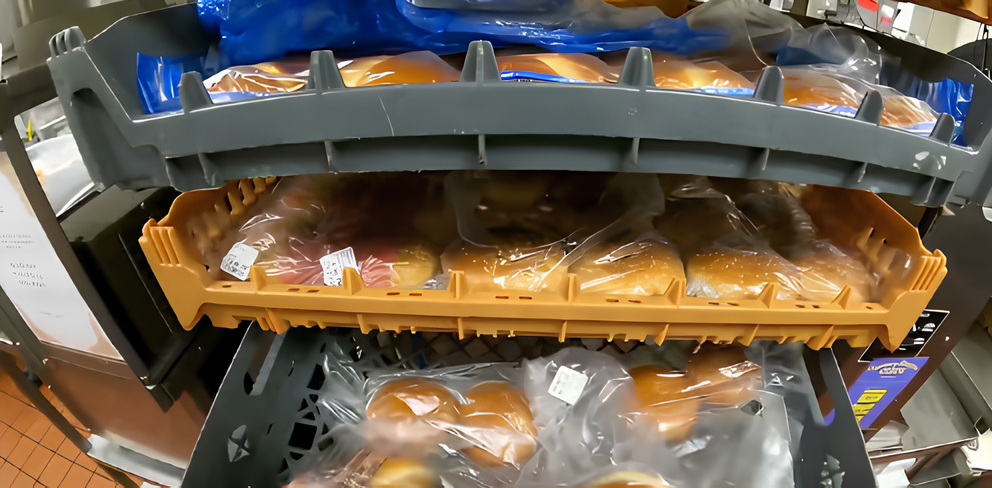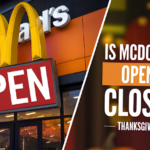McDonald’s is a global fast-food giant known for its iconic golden arches, and its menu has become a staple in over 100 countries. Over the decades, McDonald’s has adapted its offerings to cater to changing consumer preferences and cultural tastes. From its humble beginnings to its current global presence, let’s explore how McDonald’s menu has evolved over time.
The Early Days
McDonald’s started as a small barbecue joint operated by Richard and Maurice McDonald in San Bernardino, California, in 1940. The restaurant’s original menu featured items like barbecue beef, ham, and pork sandwiches, along with fries and beverages. However, it wasn’t until 1948 that the brothers revamped the menu to focus on their “Speedee Service System,” emphasizing quick service and low prices.
The Birth of the Hamburger
In 1948, McDonald’s introduced the hamburger, cheeseburger, and milkshake, laying the foundation for the fast-food concept that would revolutionize the industry. The simplified menu focused on a few core items, allowing for speedy service and consistent quality. The hamburger quickly became the flagship product, and its popularity paved the way for the franchise model.
The Introduction of Breakfast
In the 1970s, McDonald’s expanded its menu to include breakfast items, a move that would solidify its status as a multi-meal destination.
The Launch of the Egg McMuffin
In 1972, the Egg McMuffin was introduced by franchisee Herb Peterson in Santa Barbara, California. Modeled after eggs Benedict, this breakfast sandwich featured a poached egg, Canadian bacon, and cheese on a toasted English muffin. It was an instant hit and led to the nationwide rollout of McDonald’s breakfast menu in 1977.
Breakfast Expansion
Following the success of the Egg McMuffin, McDonald’s added more breakfast items, such as hotcakes, sausage biscuits, and hash browns. By the 1980s, breakfast accounted for a significant portion of McDonald’s sales, and the breakfast menu continued to grow with items like the McGriddle and breakfast burritos.
The Era of Innovation
The 1980s and 1990s marked a period of innovation and experimentation for McDonald’s as it sought to diversify its menu and appeal to a broader audience.
Introduction of Chicken McNuggets
In 1983, McDonald’s launched Chicken McNuggets, which quickly became a favorite among customers. These bite-sized pieces of chicken offered an alternative to the traditional beef burger and were accompanied by a variety of dipping sauces. The success of Chicken McNuggets spurred further innovation in McDonald’s chicken offerings.
Diversifying the Menu
Throughout the 1980s and 1990s, McDonald’s introduced several new items to its menu, including salads, the Filet-O-Fish sandwich, and the McRib. The chain also experimented with limited-time offerings like the Arch Deluxe and McPizza, showcasing its willingness to take risks and explore new culinary territory.
Catering to Health-Conscious Consumers
As consumer preferences shifted toward healthier options, McDonald’s responded by adapting its menu to cater to health-conscious diners.
Introduction of Salads and Fruit
In the early 2000s, McDonald’s added a range of salads and fruit options to its menu, including the Premium Salad line and Apple Dippers. These offerings provided healthier alternatives to traditional fast-food fare and appealed to customers seeking lighter meal options.
Calorie Counts and Nutritional Information
To further address health concerns, McDonald’s began displaying calorie counts on its menu boards in 2012. This move allowed customers to make more informed choices and demonstrated McDonald’s commitment to transparency and customer well-being.
The Global Influence
As McDonald’s expanded internationally, it adapted its menu to reflect local tastes and cultural preferences, resulting in a diverse array of offerings worldwide.
Regional Specialties
In India, McDonald’s introduced the McAloo Tikki, a potato-based burger, to cater to the country’s vegetarian population. In Japan, the Ebi Filet-O, a shrimp burger, became a popular menu item. These regional specialties showcase McDonald’s ability to customize its menu to suit local tastes while maintaining its core offerings.
The Rise of Global Favorites
Despite regional variations, some items have achieved global popularity. The Big Mac, introduced in 1967, has become a worldwide symbol of McDonald’s, and the Chicken McNuggets are enjoyed by customers across the globe. These global favorites highlight the universal appeal of McDonald’s core menu items.
Embracing Technology and Sustainability
In recent years, McDonald’s has embraced technology and sustainability initiatives to meet evolving consumer demands and reduce its environmental impact.
Digital Ordering and Delivery
The introduction of digital ordering and delivery services has transformed the McDonald’s experience. Customers can now place orders through mobile apps, online platforms, and self-service kiosks, enhancing convenience and streamlining the ordering process.
Commitment to Sustainability
McDonald’s has made significant strides in its sustainability efforts, including sourcing sustainable ingredients, reducing packaging waste, and implementing energy-efficient practices. These initiatives reflect McDonald’s commitment to environmental responsibility and its role as a leader in the fast-food industry.
Conclusion
McDonald’s menu has evolved significantly over the years, adapting to changing consumer preferences, cultural influences, and technological advancements. From its iconic hamburgers and breakfast offerings to its global specialties and commitment to sustainability, McDonald’s continues to innovate and expand its menu to meet the diverse needs of its customers. As the fast-food giant looks to the future, it remains dedicated to providing delicious, convenient, and satisfying meals to people around the world.



